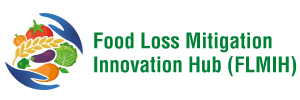
Project Description
Tomato, a well-known crop globally, is cultivated extensively across Sri Lanka. As it is highly perishable, an estimated 35-40% is not utilised for the intended food purposes. With a limited understanding of patterns of such losses along the supply chain, mitigation efforts are often misdirected or ineffective.
This study investigates tomato producer behaviours to understand food loss dynamics within the initial phase of the tomato supply chain in Sri Lanka. It focuses on uncovering the root causes of the losses at the producer level and drawing on implications for public policies in food loss mitigation.
This study was conducted with a group of 25 producers who supplied tomatoes to the Dambulla Dedicated Economic Center (DDEC) in Sri Lanka. The sample included producers from different parts of the country. Another 6 key informant discussions were also conducted with collectors, middlemen, and wholesalers in the DDEC during February 2024.
Policy Implications
- Promoting appropriate packaging for smallholder farmers involves encouraging correct tomato packaging techniques, advocating for the use of plastic crates with liners, and recommending smaller crates to minimize damage during transportation and storage.
- Establishing group harvest processing centers in village centers facilitates the preparation of produce before reaching economic centers, enabling the separation of surplus and unsuitable stocks for value-added processing like tomato sauce and pickles.
Publication
Weerasinghe, T. (2024). Ripe for Change: Tackling Tomato Loss at the Producer Level. FLM Briefing No. 3. ACIAR Food Loss Mitigation Project. Institute of Policy Studies of Sri Lanka. Colombo.
